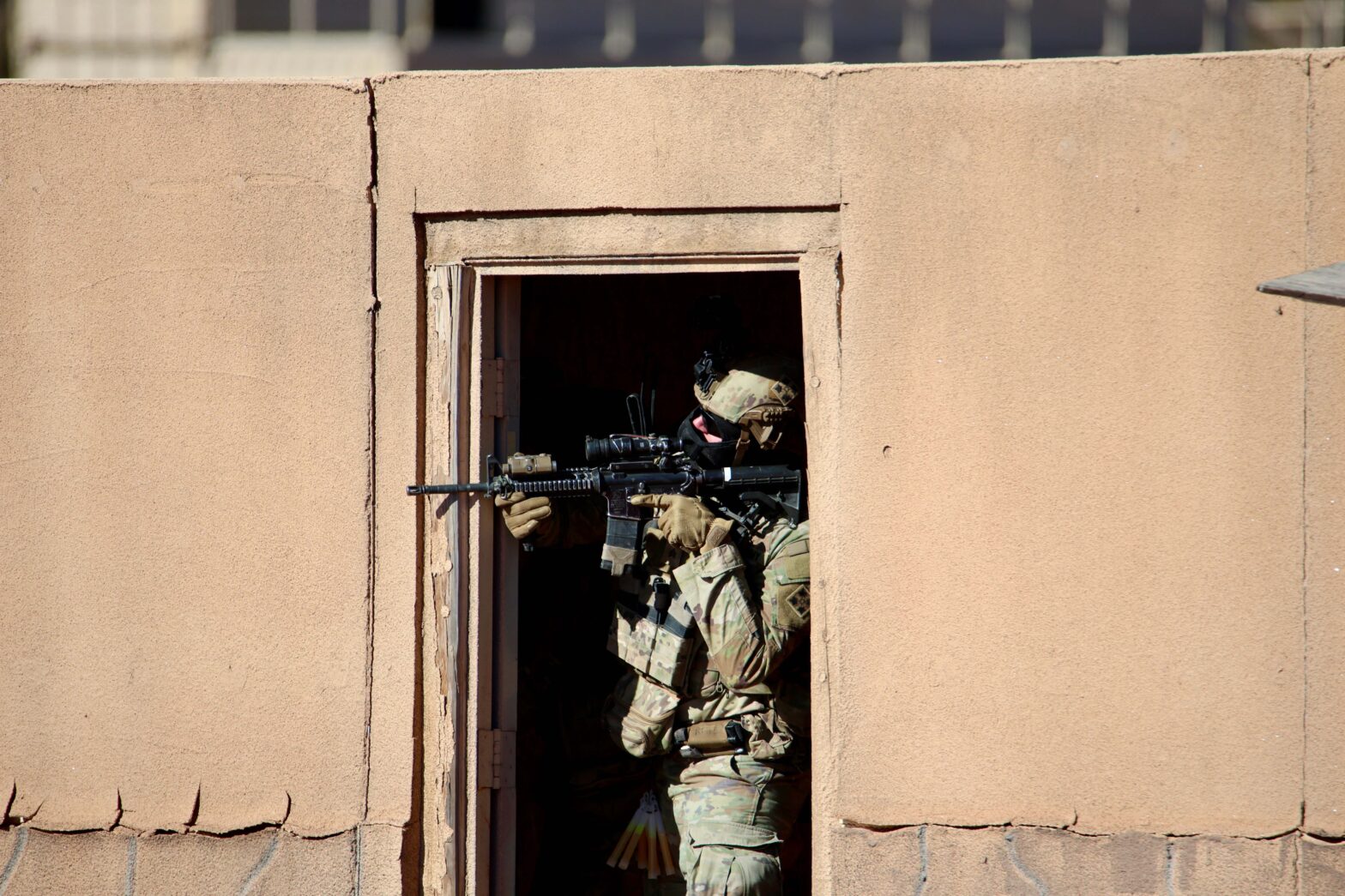Slicing the Pie
Slicing the Pie involves a slight head tilt and re-orienting the head upright. The ability to perform this skill quickly while maintaining visual clarity requires the vestibular system. Specifically, the vestibulo-ocular reflex (VOR) in the roll plane.
Kettlebell oblique sidebending is performed in this same plane, and through the addition of a single target at eye level during this exercise, one can target this skill.
Panning
Panning during a threshold assessment challenges ownership of movement with increased visual attention. As the eyes are up scanning for targets, one must maintain speed and precision of footwork.
We only move at the speed we can process visual information AND maintain control of footwork. But increased visual demands often comes with decreased speed and precision of footwork.
This is because we often become dependent on our visual system for control of movement instead of having highly trained vestibular and proprioceptive function.
I like to address this in training by progressively loading visual demands with a movement.
For example, if performing a lateral shuffle, I would start with that movement while keeping a single target in focus at eye level. I’d then progress to a single target placed overhead, which decreases visual inputs of footwork even further.
If I can maintain my speed and precision of footwork with these target positions, I progress even further to a lateral shuffle with a divided focus (two targets) at eye level.
Recoil
I’ve observed two common planes of movement with recoils – a backward linear movement, and a backward angular pitch movement.
Maintaining visual clarity and your trunk positioning during recoils requires your vestibular system. This is your VOR again, and a reflex called your VSR which stands for vestibulo-spinal reflex. The VSR helps keep your trunk positioning and balance, so you don’t get knocked backwards.
Because these are powerful forces, I like adding med ball throws to train this. A medicine ball chest pass with a single target focus at eye level trains the fwd/bwd linear movement, and a med ball slam with a single target focus on the floor trains in the angular pitch plane.
Takeaway
Threshold assessments require significant sensorimotor skills, with the visual, vestibular, and proprioceptive systems all contributing. Training these systems is a vital component of readiness and performance at the highest level.
Milliseconds and millimeters matter.
